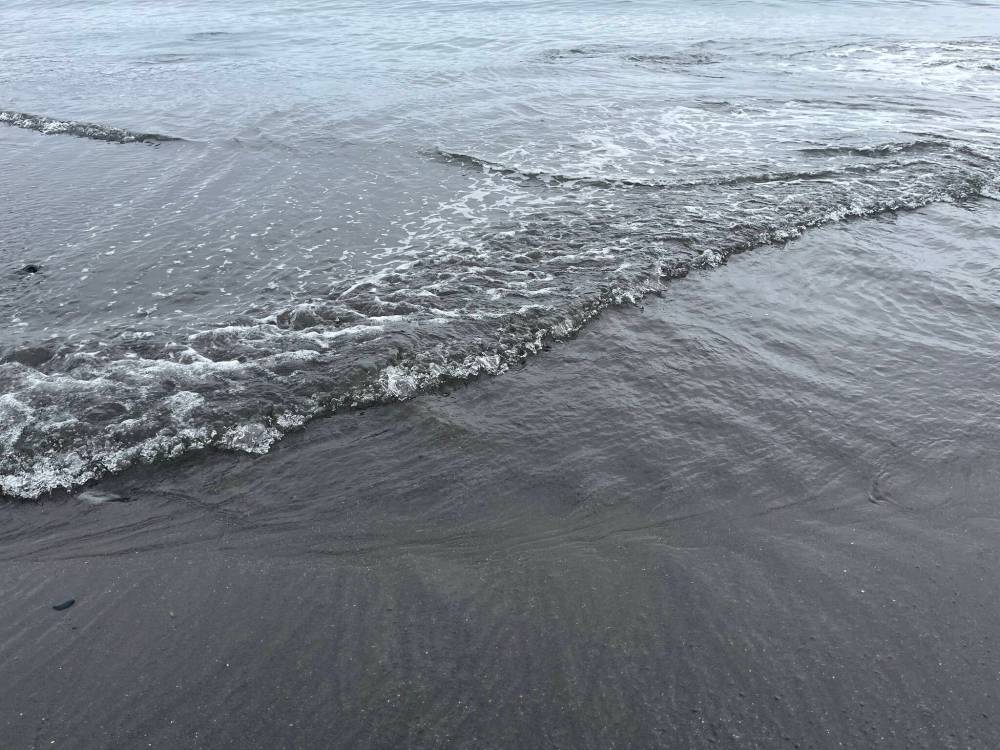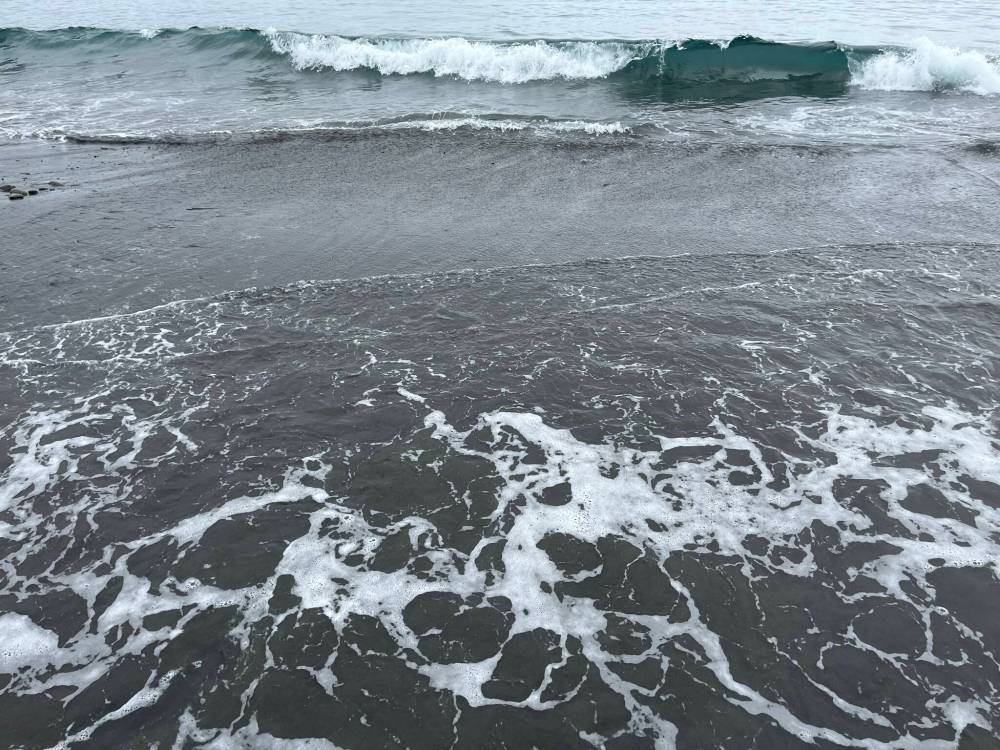Transfixed by nature’s intricate impermanence
Advertisement
Read this article for free:
or
Already have an account? Log in here »
To continue reading, please subscribe:
Monthly Digital Subscription
$0 for the first 4 weeks*
- Enjoy unlimited reading on winnipegfreepress.com
- Read the E-Edition, our digital replica newspaper
- Access News Break, our award-winning app
- Play interactive puzzles
*No charge for 4 weeks then price increases to the regular rate of $19.00 plus GST every four weeks. Offer available to new and qualified returning subscribers only. Cancel any time.
Monthly Digital Subscription
$4.75/week*
- Enjoy unlimited reading on winnipegfreepress.com
- Read the E-Edition, our digital replica newspaper
- Access News Break, our award-winning app
- Play interactive puzzles
*Billed as $19 plus GST every four weeks. Cancel any time.
To continue reading, please subscribe:
Add Free Press access to your Brandon Sun subscription for only an additional
$1 for the first 4 weeks*
*Your next subscription payment will increase by $1.00 and you will be charged $16.99 plus GST for four weeks. After four weeks, your payment will increase to $23.99 plus GST every four weeks.
Read unlimited articles for free today:
or
Already have an account? Log in here »
The smell of capelin — a small bait fish — rotting on the beach by the thousands after spawning is one of both of putrefaction and something noble, too — off-putting but peculiarly alluring. It’s part of the recognized background of this place, a scent as much about early summer as the perfume of the shrub roses.
A pair of bald eagles were turning in wide lazy circles on the afternoon gyres formed by the mix of cold air over the ocean and warm air blowing out and down from over the land.
A crow chased one of them, or, alternatively, was chased by one of them. It’s hard to tell, because the two kinds of birds fly so differently — the crow lumbering through the air with heavy wing-beats, forcing itself into the air but still able to jink into tight curves, the eagles remaining wings outspread, cutting wide arcs that intersect with the crow only occasionally.

RUSSELL WANGERSKY / FREE PRESS
A brook and the ocean join up at Western Bay, NL.
They meet and part several times, then separate, as if agreeing the symbolism of the chase is more important than its conclusion.
But I’m caught by more, well, granular things. Down at the water in Western Bay, N.L., the beach changes significantly every day. The footprints — bird and dog and human — and the tire tracks of ATVs vanish during every overnight, the waves coming in and cleaning the slate.
Small rocks — and even large ones — change places every day, unless they are large enough to be well-rooted deep under the sand. Each day’s beach is a variation of the last, but with significant differences.
Tuesday was the biggest change. A small brook comes through the sand beach from behind a rock barrisway — a big berm of rounded beach stone, rocks ranging from the size of a large beach ball to baseball-sized and smaller — sometimes through an actual break in the rocks, but also by bleeding through the inevitable cracks between the stones.
Peaty water, much warmer than the ocean, usually making a straight-line sprint to the sea as soon as it frees itself from the stone.
Big swells had fallen off to a smaller lop. But some time during the night, the organization of waves — or perhaps their disorganization — had built a shallow sand dike across the mouth of the brook, turning it to the right and sending it along a path parallel to the sea for 10 metres or so. And inside the redirection, all manner of things were occurring.
The brook was energetically back-cutting the fine deep-grey sand bank on both sides of its new route, so that cliffs of wet sand were constantly toppling into the rushing water. More brook water was bleeding down through the stones and sand was running out through the sand bank, its rivulets pulling lines of roiling sand grains out into the flow.
The sea was still working, too, waves casting in and smoothing the changed sand and brook route with a rhythmic pulse, the metronome of the ocean slapping wave crests down on the shore.
And all of that water was making individual currents that worked with one another, against one another and beside one another in a way that was mind-boggling.
Every wave created a different result as it swept in at a slightly different angle and different volume, sometimes pushing over the berm the sea had created to pile into and rush down the brook bed in spume, sometimes rushing up from the brook outlet to flood the brook from the bottom.

RUSSELL WANGERSKY / FREE PRESS
The beach at Western Bay, N.L.
The interweaving flow and currents showed themselves both in the almost oily mixing or fresh and salt water — and also in the skein of foam pulling and patterning across the surface.
It was both constant and confusing motion — but it was also completely explainable as long as you took it in small snatches, the rules of hydrology and physics demonstrated in every scrap of their variety and possibility, the sand walls falling as they slipped to their angles of repose, angles defined by the size of the sand grains and the increased slip of water added to their mix.
Standing there, it was like watching a great machine calculating an absolutely impossible and ever-changing equation, every single thing, each shift and slide and current, connected in some small way to redefining the beach in a way you would only notice if you had spent several days memorizing the way it looked with each new tide.
Rebuilt, torn down, rebuilt again, a billion moving parts engaged in creating a new version very close, but significantly different, from the last one, perpetual change through night and day and night again, ad infinitum.
The eagles cut their curved paths through the sky, a million small and desperate fish rushed in dark-backed schools to spawn in just the right temperature of ocean and the right pitch of waves, a distant moon tugged up the covers of the tide and pulled them back again twice a day, just like it always has.
We are so small.

Russell Wangersky
Perspectives editor
Russell Wangersky is Perspectives Editor for the Winnipeg Free Press, and also writes editorials and columns. He worked at newspapers in Newfoundland and Labrador, Ontario and Saskatchewan before joining the Free Press in 2023. A seven-time National Newspaper Award finalist for opinion writing, he’s also penned eight books. Read more about Russell.
Russell oversees the team that publishes editorials, opinions and analysis — part of the Free Press‘s tradition, since 1872, of producing reliable independent journalism. Read more about Free Press’s history and mandate, and learn how our newsroom operates.
Our newsroom depends on a growing audience of readers to power our journalism. If you are not a paid reader, please consider becoming a subscriber.
Our newsroom depends on its audience of readers to power our journalism. Thank you for your support.


